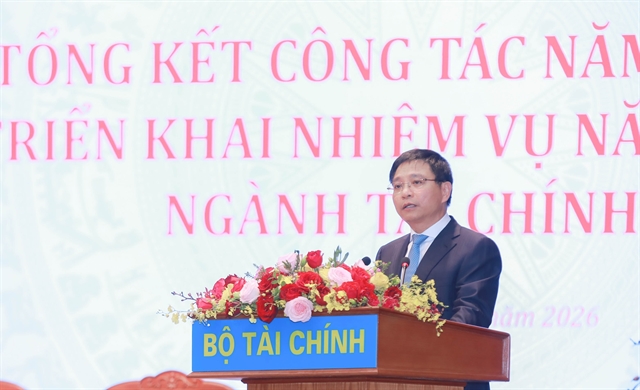 Economy
Economy


|
| Renewable energy projects should be brought into operation in 2021-23 period to supplement the insufficient power supply. — Photo tapchicongthuong.vn |
HÀ NỘI — Viet Nam should study operational solutions to make full use of existing power sources and enhance the development of renewable energy sources due to the rapid deployment of construction to ensure electricity supply in 2021-30, according to the Ministry of Industry and Trade (MoIT).
The latest calculations from Vietnam Electricity (EVN) show that the power demand of the national electricity system in 2020 is expected to reach 255.6 billion kWh, up 6.5 per cent from last year. The power demand was some 4 billion kWh lower than the MoIT’s previous forecast due to the impact of the COVID-19 pandemic.
The ministry said power supply this year would be ensured and there would be electricity cuts absent any abnormal changes.
The MoIT has worked with ministries and sectors to propose a development strategy and a special mechanism for the electricity industry. It has also specified policies and solutions for the Government and Prime Minister Nguyễn Xuân Phúc to ensure the progress of power projects. It has regularly updated power demand, reviewed electricity projects and calculated to balance the power system. These efforts have helped the ministry propose solutions to ensure power supply for the country’s socio-economic development.
According to the Institute of Energy, the power demand will increase by 8 per cent a year in 2021-30. The power supply in 2025 is expected at 337.5 billion kWh and 478.1 billion kWh in 2030.
With the current growth rate, Việt Nam would need to add on average 5,000MW to 6,000MW a year into operation. The total investment for power generation and projects would be around US$8 billion a year. Meanwhile, primary energy sources are running out and the ability to provide the source is limited, resulting in an increase in imports of fuel.
This was why renewable energy projects should be brought into operation in 2021-23 to supplement the insufficient power supply of thermal power plants which have been delayed, said the MoIT’s Electricity and Renewable Energy Authority.
In addition, the authority proposed to continue to sign power-purchasing contracts with Laos to ensure electricity imports of some 3,000MW by 2025 from the country. Viet Nam could also consider importing power from China’s 220 kV voltage level.
The MoIT said it had been accelerating the building of the power master plan VII to submit to the PM for approval.
The master plan will clarify a list of national big and important power resources as well as important power grids at a voltage level of more than 220 kV. The plan also clarifies prioritised projects to diversify power resources and having a more suitable electricity structure in each region.
While the plan has not been approved, the ministry will continuously review to report, propose adjustments and supplements to the planning of power sources and grids.
In parallel with the planning of power sources and grids, the ministry is studying to propose to the Government and the PM mechanisms and policies to encourage the development of renewable energy resources including electricity price and bidding mechanisms.
It is expected that coal-fired power would reach nearly 50,000MW by 2030, accounting for 33.6 per cent of total installed capacity of power sources (down 9 per cent compared to the revised Power Master Plan VII); gas thermal power would be about 27,800MW, accounting for 19 per cent (up 4 per cent compared to the revised the Power Master Plan VII). The large hydroelectricity plants with a capacity of more than 30MW would reach 19,200MW, accounting for 13 per cent of the total while small hydro and renewable energy would reach 38,300MW, accounting for 27 per cent.
Coal-fired thermal power would account for 42 per cent, gas thermal power 27.5 per cent, hydropower 12.5 per cent and power imports 4 per cent. The total capacity of wind and solar power would reach 55 billion kWh by 2030 (exceeding the target set in the Renewable Energy Development Strategy of 4 billion kWh).
The ministry will report and submit to the PM the Draft Power Master Plan VII and the Draft Strategic Environmental Assessment Project for appraisal by the end of October 2020. — VNS




